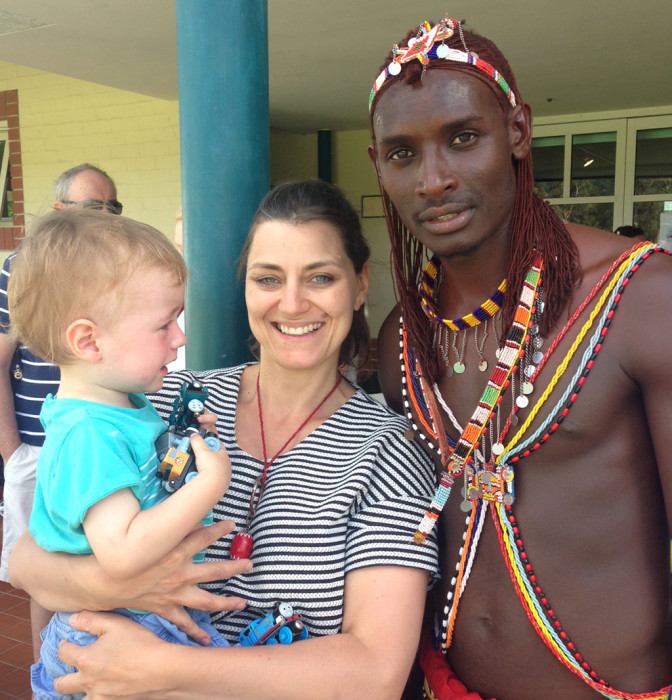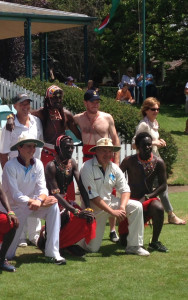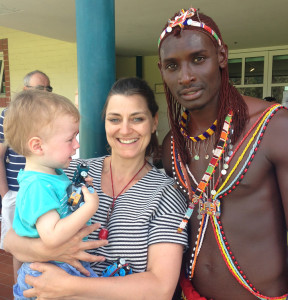10th February 2016 Canberra, Australia
Out of Africa

Sudan is a rhinoceros.
If I had written that sentence during the two years I worked at our Embassy in Khartoum, there might have been raised eyebrows. But the fact remains that Sudan is a rhino, and a very special one…
Sudan was born in what is now South Sudan in the late 1970s, and spent some time being exhibited in the Khartoum Zoo (a zoo which has been closed; its location now hosts a luxury hotel). Sudan was trans-located to Dvur Kralove Zoo in what is now the Czech Republic, and lived there happily for many years; I would have seen him there when I visited Dvur Kralove during my posting to Prague. It may seem strange that large numbers of animals were moved from East Africa to the snowy hills of central Europe in the 1970s and 80s – some of the background to this project is in JM Ledgard’s extraordinary novel “Giraffe”. But it is a good thing that these animals did make the move, as many of their host populations fell victim to widespread poaching in the years that followed. In an attempt to re-populate some of these areas, or at least to move the animals to a place more conducive to their breeding, many of them have trans-located back to Africa during the last decade. And so Sudan now lives a contented, but perhaps slightly lonely life in the Ol Pejeta wildlife sanctuary in Laikipia, Kenya. He is the last surviving male Northern White Rhino in the world.

I might have met Sudan again in 2011, when I went to Ol Pejeta. This visit was not entirely about rhinos; it was a cricket tour. A group of young gentlemen (they now also have a ladies’ team) from the village of Il Polei had started playing cricket under the name of the Maasai Cricket Warriors, and my club – Dar es Salaam’s fearsome and legitimately under-rated Dik Diks, went up to play them. Il Polei did not have a cricket pitch (it does now, thanks to support from the British Army and Australian High Commission in Kenya, among others,) but a wicket was laid out in the middle of the Ol Pejeta sanctuary, some distance from their home, and that is where we played. The Dik Diks won, in front of a crowd of some 200 bemused buffalos, who came up to the boundary rope but remembered their manners and did not cross it.
This has all come flooding back to me, as I had the good fortune of playing against the Warriors again this weekend. The backdrop – Bowral’s beautiful oval, next door to the Bradman Museum, was a long way from Ol Pejeta. The audience was again about 200-strong, though this time human (and some dogs). The Warriors had been invited to Australia as guests of the Primary Club of Australia and the Last Man Stands cricket organisation, and had already played a couple of games at the historic Sydney Cricket Ground. The day in Bowral featured them playing two games of T20 cricket against teams selected by the Bradman Foundation, who had clearly decided that their afternoon eleven needed a 50-year-old with incipient arthritis as their wicket keeper, and so gave me the call. The sun shone, and the Warriors and Foundation shared the honours, winning one game each. The day could not have been better.

The Maasai Cricket Warriors are a remarkable team. They combine a great pride in their traditions with a modern outlook – their captain, the impressive Sonyanga Ole Ngais, is studying communications and electronic media at university. They actively promote important social issues which affect their community, including conservation and the fight against Female Genital Mutilation. (As it happens, these are both areas where the British Government is also taking a leading role – see here and here). They have not had formal cricket training, although I can vouch for the fact that they are able to bowl a fast, in-swinging Yorker which is good enough to see off an aging club cricketer like me. You can learn more about their work here, and read about ‘Warriors’, the wonderful documentary film about them here.